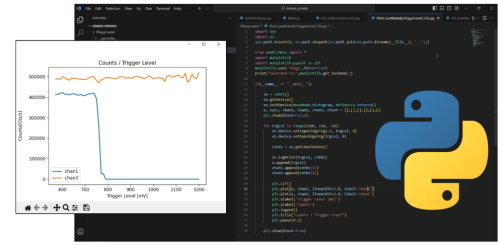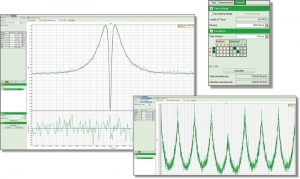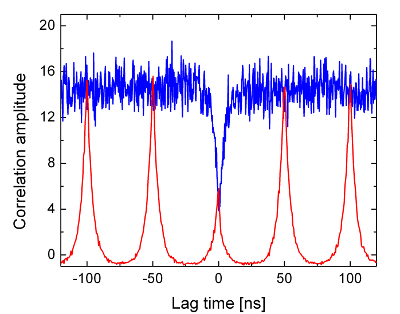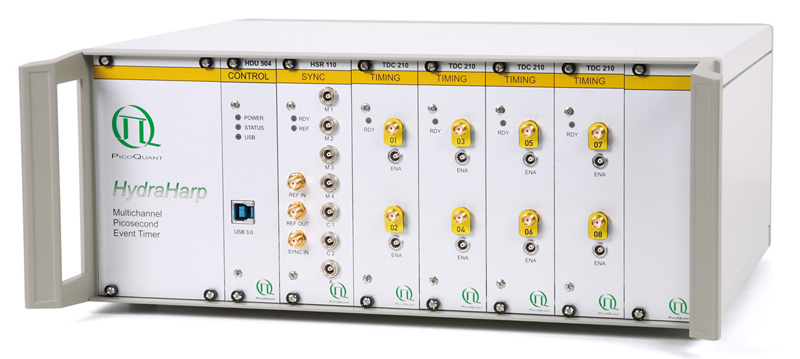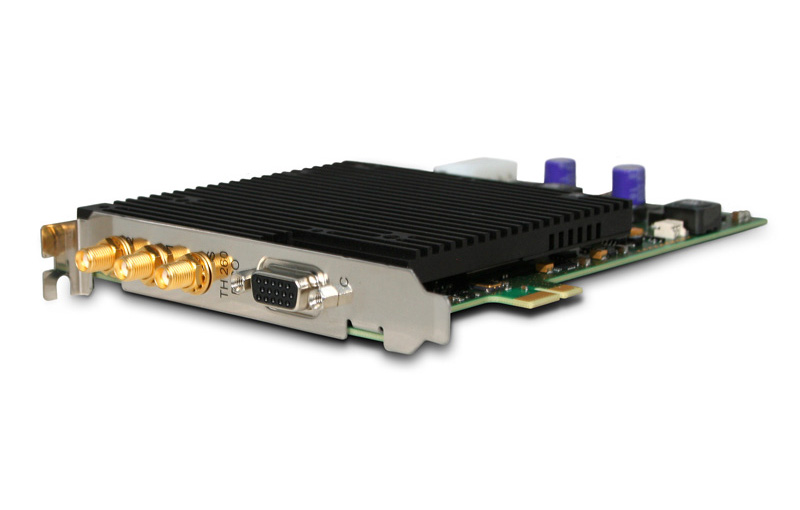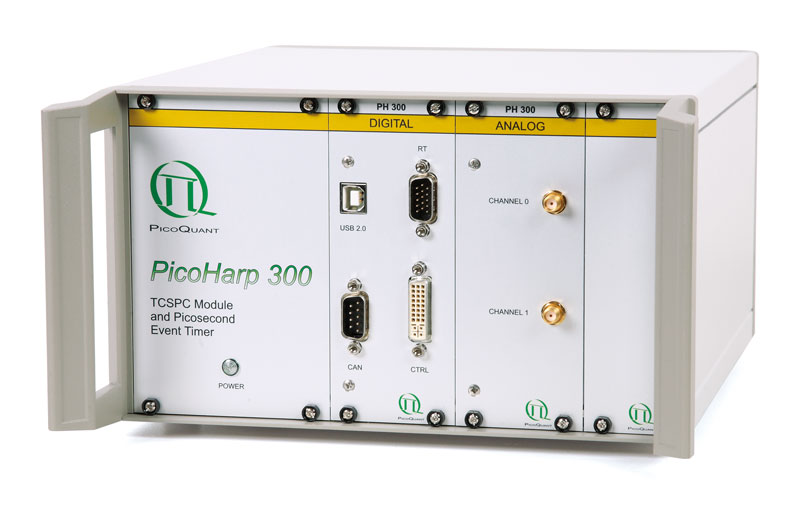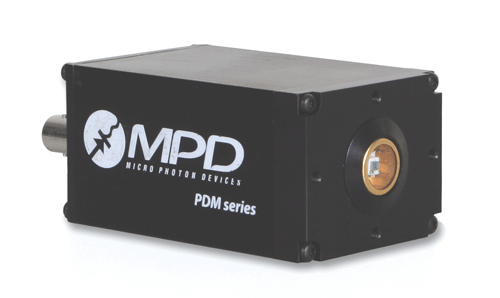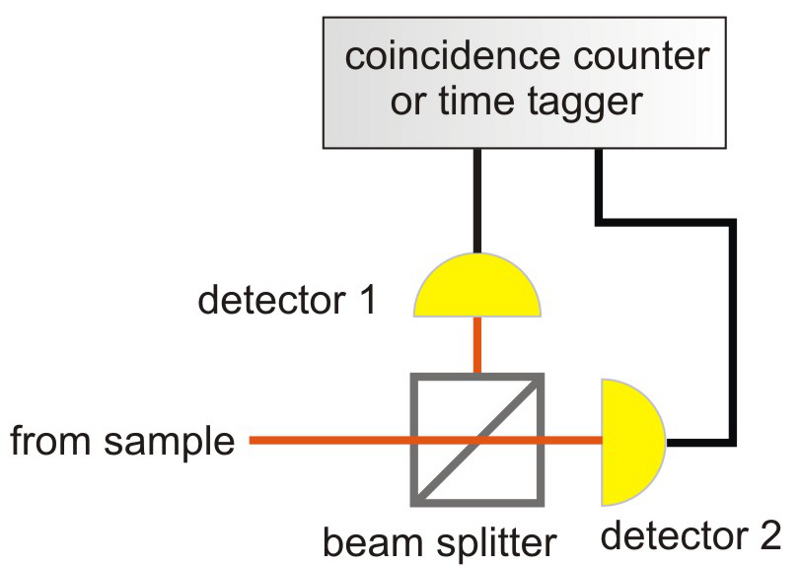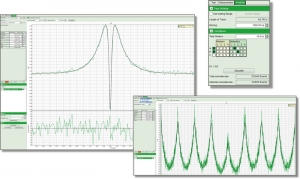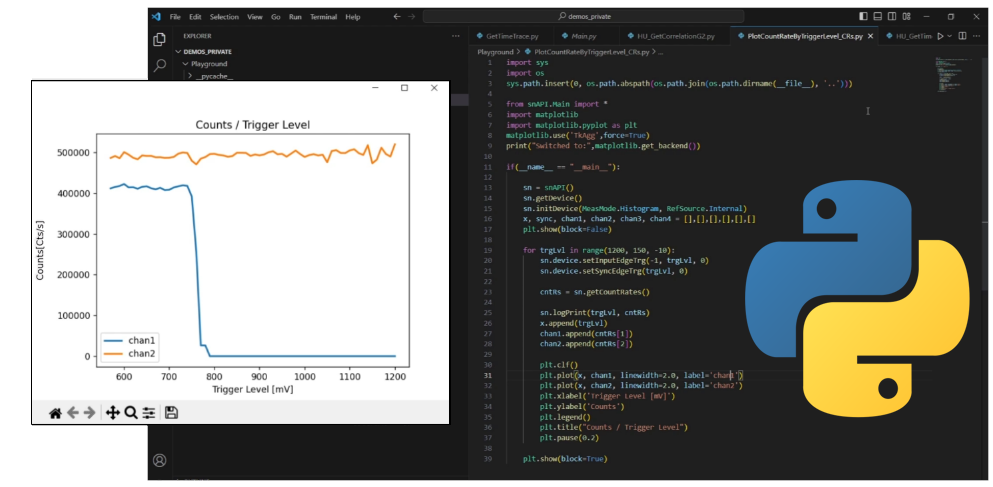Quantum Optics
Coincidence Correlation
Determine the presence of a single quantum system
Coincidence correlation with picosecond timing can be used to determine if one is actually observing a single quantum system in the form of a single photon emitter. Here one employs the knowledge that such a system can only emit one photon at a time. This is because in typical quantum systems such as single molecules or defect centers in diamond there is a characteristic average lifetime of the excited state that must pass before the system can be excited again. If one finds that two detectors observing the source „click“ simultaneously (with statistical significance) then obviously the source cannot be a single photon emitter.
In case of experiments dealing with photon entanglement (example for coincidence counting of entangled photons) one effectively tries to prove or disprove correlations between measurement outcomes using some kind of correlator. In the case of experiments with photons one may, for instance, employ polarizers to filter out quantum states of interest and then use photon detectors to determine whether or not they occurred correspondingly at both parts of the entangled pair. Now, given that photon detectors are not 100% efficient (and actually neither is the creation of entangled pairs and their transmission) one typically must repeat the experiment many times in order to arrive at a statistically reliable answer. Since there can also be unwanted photons from background radiation or detector artifacts it is a smart common practice to perform the coincidence correlation with picosecond timing. The correlations can then be determined for narrow time windows where the knowledge of the time the photons travel can be used to eliminate background.


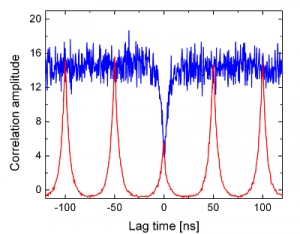
 Contact us
Contact us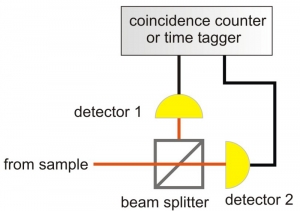
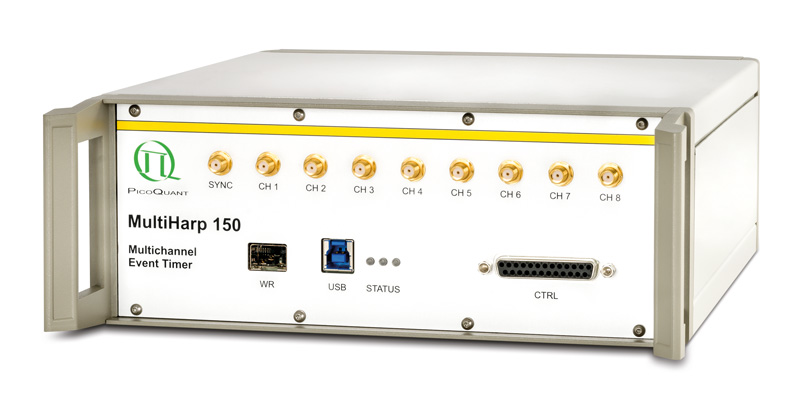 MultiHarp 150
MultiHarp 150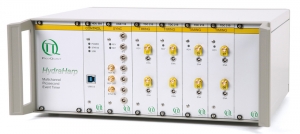 HydraHarp 400
HydraHarp 400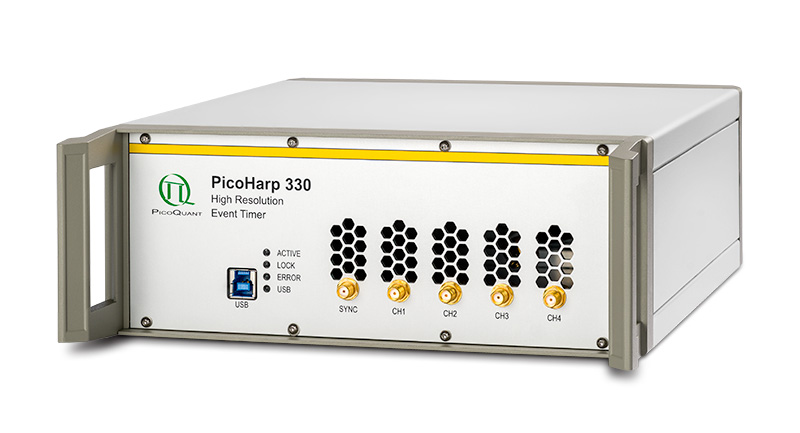 PicoHarp 330
PicoHarp 330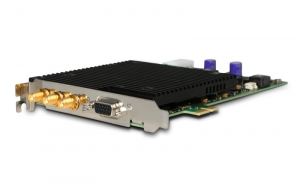 TimeHarp 260
TimeHarp 260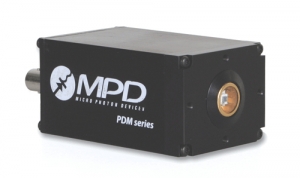 PDM Series
PDM Series